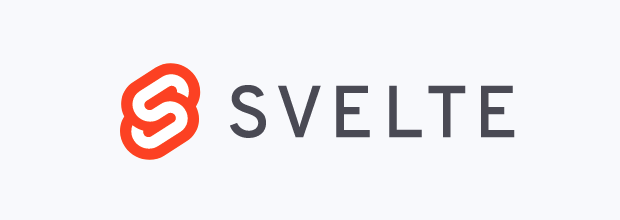Exploring the Top Lightweight Alternatives to React in 2023
React, the popular JavaScript library developed by Facebook, has undoubtedly revolutionized the way web apps are built by introducing a component-based architecture and a virtual DOM. However, as web development continues to evolve, developers often seek alternatives to React that offer a more lightweight and efficient approach to create user interfaces. Whether it’s for faster load times, better performance on resource-constrained devices, or just a desire for a simpler development experience, there are several alternatives worth exploring. In this article, we’ll delve into some of the best lightweight alternatives to React, including a relative newcomer to the scene — htmx.
The Best Lightweight React Alternatives
1. Preact

Preact is often regarded as one of the closest alternatives to React. It’s a fast and lightweight library that maintains a similar API to React, making it an easy transition for developers familiar with React’s syntax. Preact focuses on providing the core features necessary for building user interfaces while minimizing its bundle size. Its small footprint is ideal for applications that prioritize speed and performance, making it one of the most popular lightweight React alternatives. Check out our guide to using Preact as a React alternative.
Key Features:
- Size: Preact is incredibly lightweight, with a minified and gzipped size of around 3KB.
- Compatibility: Preact is compatible with most React applications and libraries, making it easy to integrate into existing projects.
- Performance: Due to its small size, Preact boasts fast load times and optimal runtime performance.
- Ecosystem: While not as extensive as React’s, Preact has a growing ecosystem of plugins and extensions.
2. Inferno

Inferno takes a unique approach to lightweight web development by striving to be the fastest UI library available. It’s inspired by React and aims to provide a similar developer experience while delivering exceptional performance. Inferno boasts an impressive virtual DOM diffing algorithm that contributes to its exceptional rendering speed.
Key Features:
- Performance: Inferno’s highly optimized diffing algorithm leads to blazing-fast rendering, making it an excellent choice for applications where performance is paramount.
- Size: While slightly larger than Preact, Inferno still maintains a small footprint compared to React.
- React-like API: Inferno’s API closely resembles React’s, making it easy for React developers to switch over.
- Compatibility: Inferno is compatible with most React projects and libraries, making migration relatively straightforward.
3. Svelte

Svelte is a JavaScript framework that takes a different approach to building user interfaces by shifting much of the work to compile time. Instead of a runtime library, Svelte compiles components into highly optimized JavaScript at build time, resulting in smaller and more efficient code that requires less runtime overhead, which makes it an excellent lightweight alternative to React. We have a complete introduction to Svelte on SitePoint Premium.
Key Features:
- Performance: Svelte’s compilation approach leads to smaller bundle sizes and faster runtime performance, as much of the work is done during the build process.
- No Virtual DOM: Unlike React and its alternatives, Svelte doesn’t use a virtual DOM, which can lead to even better performance and reduced memory usage.
- Ease of Learning: Svelte’s syntax is simple and easy to understand, making it a great choice for developers new to frontend development.
- Animation Capabilities: Svelte provides built-in animation features that allow you to create fantastic user interfaces.
4. Solid.js

Solid.js is a relatively new entrant in the lightweight JavaScript library landscape. It aims to provide a minimalistic API and efficient rendering mechanism. Solid.js embraces a fine-grained reactivity model, where components re-render only when their dependencies change. This approach can lead to better performance by minimizing unnecessary updates.
Key Features:
- Reactivity Model: Solid.js’s reactivity model is finely tuned to ensure that only the necessary components are updated when data changes, leading to improved performance.
- Small Size: Solid.js maintains a small bundle size while still providing powerful features.
- JSX Support: Solid.js supports JSX syntax, making it familiar to React developers.
- Server-Side Rendering (SSR): Solid.js supports server-side rendering out of the box, which can be crucial for SEO and initial loading performance.
5. Vue.js

Vue.js is another popular lightweight alternative to React. It’s a progressive JavaScript framework known for its ease of integration, simple syntax, and gradual learning curve. Vue.js offers a balance between performance and developer-friendly features, making it a compelling choice for various projects. Check out Jump Start Vue.js, second edition, for a a comprehensive introduction to building apps in Vue, available on SitePoint Premium and in bookstores everywhere.
Key Features:
- Flexibility: Vue.js provides a flexible architecture that allows developers to adapt it to their preferred development style.
- Simple Syntax: Vue’s template syntax is easy to understand and allows developers to build complex UIs with minimal effort.
- Component-Based: Like React, Vue.js promotes a component-based approach, enabling reusability and maintainability.
- Vue Router and Vuex: Vue.js comes with official libraries for routing (Vue Router) and state management (Vuex), making it suitable for building more complex applications.
6. htmx

htmx is a relatively newcomer to the world of frontend development, offering a unique take on building dynamic web interfaces. It allows developers to enhance existing HTML with additional behaviors without the need for a complex JavaScript framework. Check out our introduction to htmx to get an idea of what it can do.
Key Features:
- Simplicity: htmx focuses on adding interactivity to web pages using simple HTML attributes, making it easy for developers to integrate without a steep learning curve.
- Minimal JavaScript: With htmx, the JavaScript required to achieve dynamic behaviors is minimal, resulting in faster load times and reduced client-side processing.
- Progressive Enhancement: htmx follows the philosophy of progressive enhancement, where basic functionality is available to all users, and enhanced features are layered on top for those with JavaScript enabled.
- Server-Sent Events (SSE) and WebSockets: htmx seamlessly integrates with server-sent events and WebSockets, enabling real-time updates without complex frontend logic.
Conclusion
While React continues to dominate the frontend development landscape, these lightweight alternatives offer exciting options for developers seeking improved performance, smaller bundle sizes, and simplified syntax. Preact, Inferno, Svelte, Solid.js, and the emerging player htmx each bring their unique strengths to the table. The choice of which alternative to use depends on the specific requirements of your project, your team’s familiarity with the technology, and the performance goals you’re aiming to achieve. As the web development ecosystem evolves, these alternatives provide valuable options for creating modern, efficient, and delightful user interfaces.
